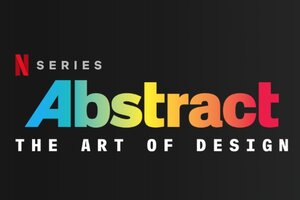Who are we missing?
Micène Fontaine, July 12, 2022
“No pets allowed.” Who would have thought 3 words on a sign would be a deterrent to women coming in to seek shelter in a place designed to make them feel welcome and safe. If you listen to the “Hidden Brain” podcast, you already know that it was indeed a deterrent. There was a “mismatch.” Women who had found the courage to leave an abusive situation often left with children and the family pet. Was it an oversight or a flaw in the design process?
In contrast, you have designers like Cas Holman. “Design for Play '' is the title of the Netflix documentary dedicated to her work. In the episode, she shares her creative process and the care she takes in im agining the various ways in which kids could intuitively engage with a single toy. It involves a lot of time thinking like a kid and observing kids engage with various prototypes. Cas Holman’s approach to design is fundamentally about inclusion. It removes or lowers as many barriers as can be for as many end users (kids in this case) as possible from engaging with the task at hand (play).
agining the various ways in which kids could intuitively engage with a single toy. It involves a lot of time thinking like a kid and observing kids engage with various prototypes. Cas Holman’s approach to design is fundamentally about inclusion. It removes or lowers as many barriers as can be for as many end users (kids in this case) as possible from engaging with the task at hand (play).
Inclusive design is not about compliance with existing accessibility standards. It is a given that the solution should - at the very least - meet these standards. Instead, inclusive design is about identifying where the frictions are in a particular experience across as wide a range of users in as wide a range of situations as possible. While inclusive design started in the digital world and was primarily concerned with user interface and user experience, it has long since been adopted as a design approach for products, services, and the built environment.
Inclusive design is more of a design intent than it is about a particular outcome. It’s not about designing for everyone but rather designing with, ideally, everyone at the table. Or, at least, with everyone in mind. It’s a tall order for sure and, according to Benjamin Evans, Inclusive Design Leader at Airbnb, it starts with a rather simple question: “Who are we missing?” The answers to that question go beyond skin color, sexual orientation, gender identity, physical and cognitive abilities. The answers are as nuanced as there are people, which can be intimidating and which probably explains the inclination that some designers have to go for compliance rather than push their thinking beyond the boundaries of accessibility and toward inclusion.
The business case for inclusive design is well documented and so are the benefits to end users. So why is it not the norm? Reasons - the ones I have heard - range from lack of time, lack of budget, lack of understanding to an overreliance on faulty assumptions. Whatever the reasons are, the solutions stem from a willingness to uncover “the obstacles you don’t see”, which is the title of the Hidden Brain episode I mentioned earlier. For designer Ian Rolston, it’s an approach to design rooted in creativity and humanity. Be sure to check out his Change by Design session exploring "The Necessary Rise of Inclusive Design".
In the meantime, here is to humanity and reduced inequalities - by design.




